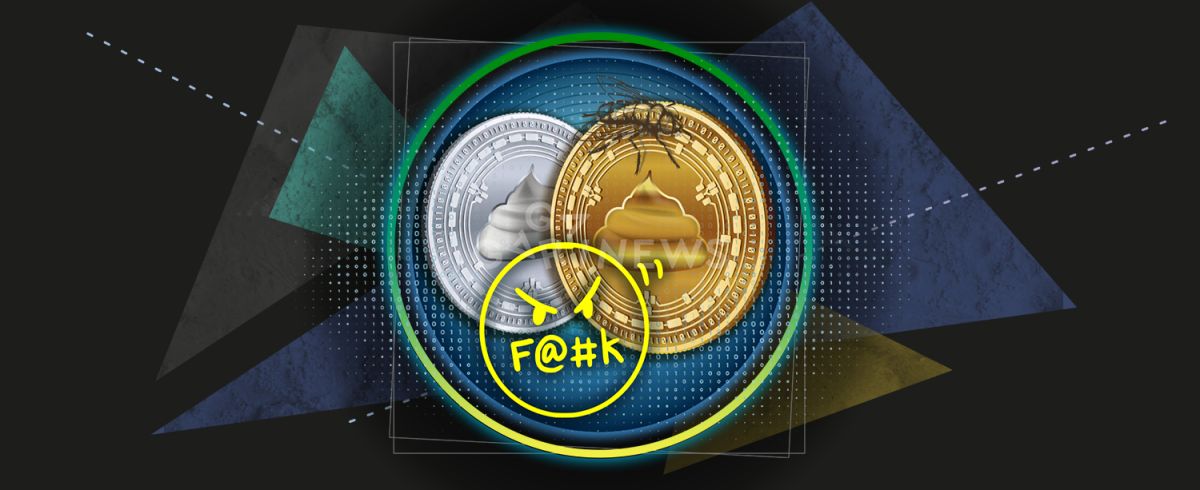How to spot shitcoins?

There are over 20,000 cryptocurrencies in circulation. Many of them are “shitcoins” and will not be able to survive during a long bearish trend. There will only be relevant coins left in the game that the developed community and real traders are interested in.
On this page
A coin that offers no real value is often referred to by many in the crypto community as a “shitcoin”. Such assets are more likely to experience price declines, lose liquidity, or completely vanish from the market. They can occasionally deceive potential investors by masking themselves as profitable investments. However, some signs can help to spot such shitcoins. How to determine that investing in an asset will not bring the expected result? We have identified 5 signs of a shitcoin.
A large number of tokens for pre-sale
The most widely known pre-sale types are seed, venture, private, and public. Regardless of the number of pre-sale rounds, there's one rule you should never ignore. The rule says that the more coins are allocated for this round, the more negatively it will affect the price of the asset in the future.
In comparison to individuals who buy the asset during a public auction, those who purchase coins during the pre-sale stage get them at a lower price. If the asset's price climbs after the project's debut, the earliest holders will be tempted to sell tokens in order to get profits. When a substantial amount of coins is allocated for a pre-sale, there is a considerable predominance in favor of sellers in the market. As a result, the token's value may fall significantly, leaving late buyers with losses.
Short vesting period
Vesting is the process of keeping bought tokens in the project pool locked for a predetermined period after listing. In such a way, traders can’t sell their crypto. This measure is required to stabilize the asset’s liquidity and price movement.
Vesting is applied not only to investors, but also to the project team. Developers and founders typically face tougher restrictions. The blockchain's smart contract contains the rules for locking tokens in the pool after purchase, so they cannot be changed or bypassed.
The shorter the vesting period, the more volatile the token's value in the short term. Consider this: if pre-sale participants have immediate access to the tokens, there is a high risk of dumping a large number of coins, which will result in a price decline. At the same time, when holders get access to tokens at different intervals over time, it is no longer so easy for them to affect the price.
Low circulating supply of tokens with a high total supply
If the circulating supply is extremely low while the total supply is quite high, the asset's price may be jeopardized. A price decline comes naturally when new tokens with a low circulating supply appear on the market. It is so because supply increases while demand remains flat. In order for the price to rise in the future, there should be a balance between these two indicators.
In our article “What is tokenomics and how to analyze it,” you can find an explanation of the circulating and total supplies.
Crypto shilling
Shilling is a type of token advertising where the founders pay various bloggers, influencers, and other public people to promote their token and encourage investors to buy it. In general, trustworthy and high-quality projects do not use this type of marketing strategy. So when someone is actively trying to sell you something, you should be extremely careful.
In slang, a shill is a hustler or con-person who tries to convince other people to buy something
Aggressive marketing is more typical for projects hoping for a short pump (artificially raising the price of a token), and are not interested in the coin's long-term prospects.
Insufficient details in the White Paper and Roadmap
If the White Paper describes the history of cryptocurrencies, the importance of Bitcoin, and the progressivity of the blockchain, it is most likely because the developers have nothing to say about their project. First, such documents should describe aims, objectives, plans, utility, and tokenomics. The token's purpose should be clearly stated therein.
A roadmap is a strategic overview for the next few years. When will the token be listed on the exchange? When will the staking feature be launched? When will the token-based game be released? These are some of the few questions a roadmap can answer. It should be simple and easy to understand, and plans should correspond to reality and real potential. If the roadmap claims dramatic changes in a short period of time, you will probably be duped.
The signs provided here will help you to do your own research on the token and to avoid investing in coins that will lose value in a short period of time.
The content on The Coinomist is for informational purposes only and should not be interpreted as financial advice. While we strive to provide accurate and up-to-date information, we do not guarantee the accuracy, completeness, or reliability of any content. Neither we accept liability for any errors or omissions in the information provided or for any financial losses incurred as a result of relying on this information. Actions based on this content are at your own risk. Always do your own research and consult a professional. See our Terms, Privacy Policy, and Disclaimers for more details.

























